denominator
100000
27 record(s)
Type of resources
Available actions
Topics
Keywords
Contact for the resource
Provided by
Years
Formats
Representation types
Update frequencies
Status
Scale
-
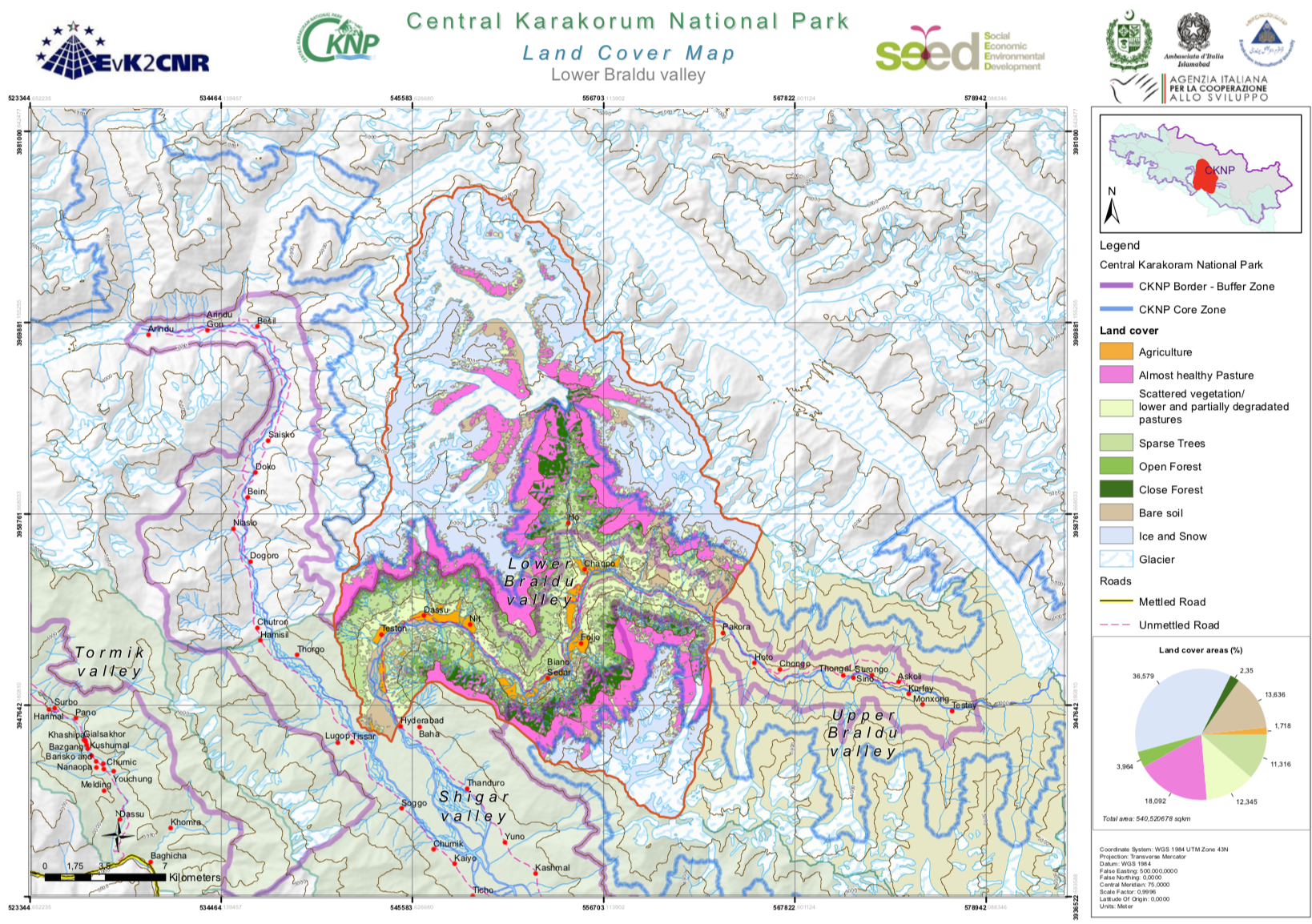
The Central Karakorum National Park (CKNP) is one of the most important national parks of Pakistan and comprises one of the largest mountain glacial systems in the world with Siachen (75 km), Baltoro (57 km) and Hispar-Biafo (122 km) glaciers originating within its boundaries. Administratively, it is situated in the Skardu and Gilgit districts of the Gilgit and Baltistan Region of Pakistan. The 72,500 km2 national park borders China, Afghanistan, and India, and represents one section of the of Hindu Kush-Karakorum-Himalaya mountain range. The area is part of the "transitional zone" between the arid Central Asia and the semi-humid subtropics of the northern South Asia. The land cover map for the CKNP has been divided into 14 subregions as follows: - Astak - Bagrot - Basha - Daghoni - Danyore - Ghulmat - Haramosh - Hopper - Lower Braldu - Nagar - Shigar - Thalay - Tormik - Upper Braldu
-
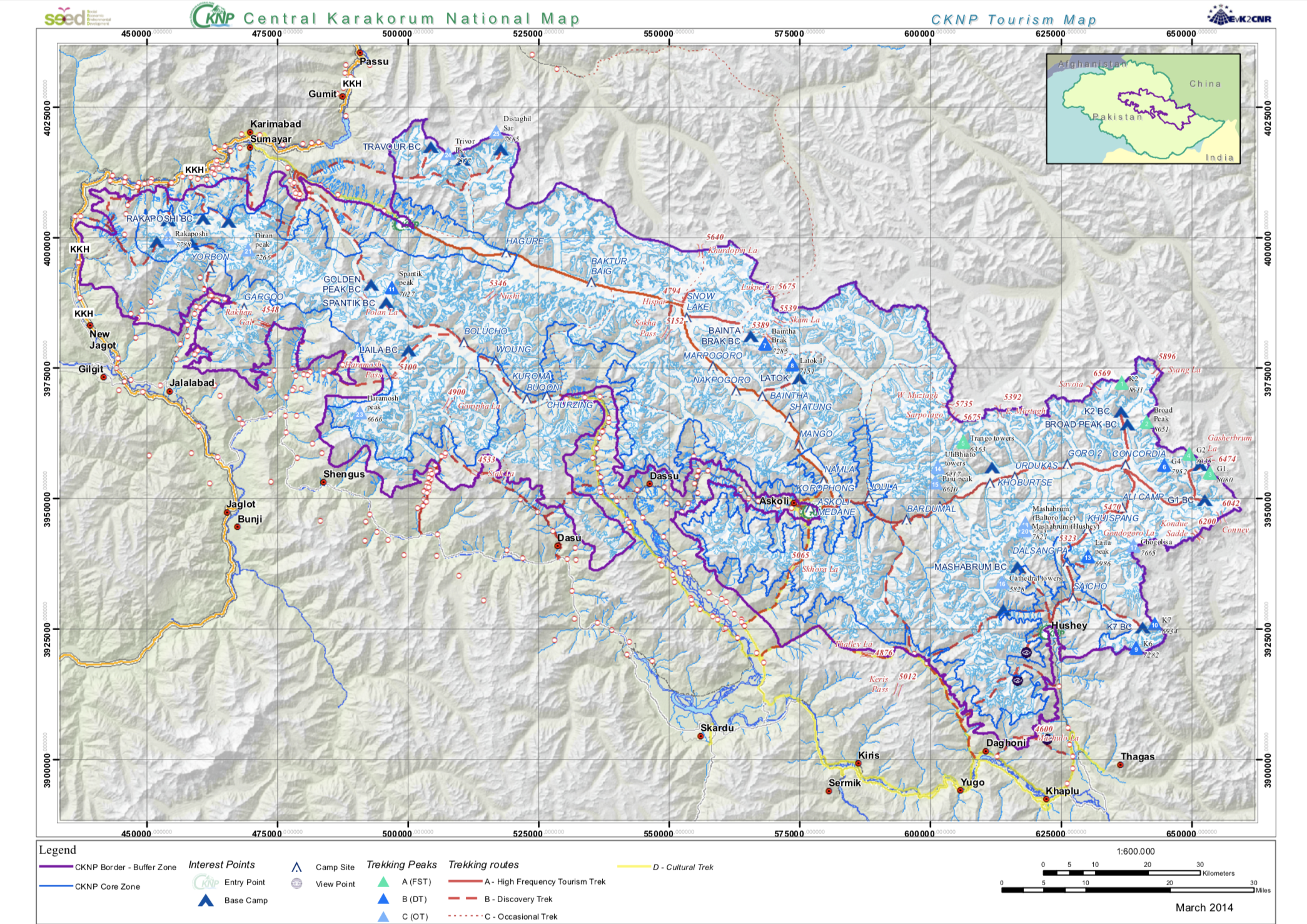
The Tourism Map of the CKNP has been realised using field data collected with GPS positions and dedicated tracks. All the informations are validated by experts and local persons.
-
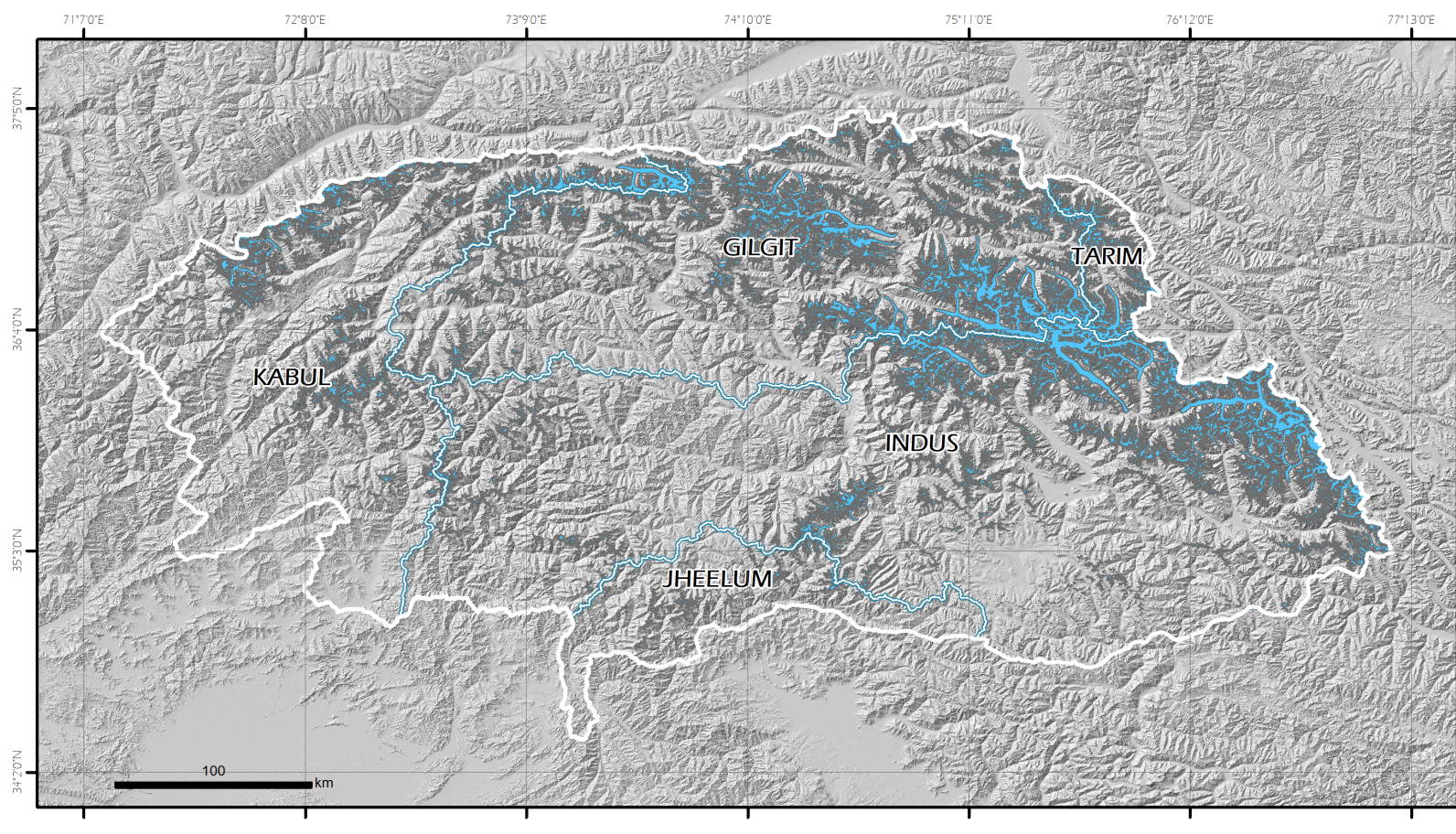
This new Pakistan glacier inventory has been extracted from optical data acquired by the European Space Agency Sentinel-2 twin satellites. This choice is dictated by the need to respond to the requirement to have homogeneous coverage of the entire territory under examination in terms of image acquisition dates, cloud cover and good spatial resolution, that allow the recognition of glaciers and their mapping. Furthermore, particular attention in the selection of the data processing and mapping methods was given for the expected prospect activity of updating the glacial perimeters and monitoring changes in the future. The methodology was based on a semi-automatic classification (segmentation) and the mapping has been implemented in a Geographic Information System (GIS) environment. In this new inventory, 13,032 glaciers covering 13,546.93 km2 have been mapped. The available inventory is the Version 1.0.
-

In 1997, three ice cores were recovered from the Dasuopu glacier (28°23'N, 85°43'E) with the use of an electromechanical drill in dry holes. The first core (C1) was 159.9 m long and was drilled at 7000 m above sea level (a.s.l.) down the flow line from the top of the col, and two cores (C2 and C3), 149.2 and 167.7 m long, respectively, were drilled to bedrock 100 m apart on the col at 7200 m a.s.l. Visible stratigraphy showed no hiatus features in any of the cores. All cores were analyzed over their entire lengths for oxygen isotopic ratio (?18O ), chemical composition, and dust concentration.
-
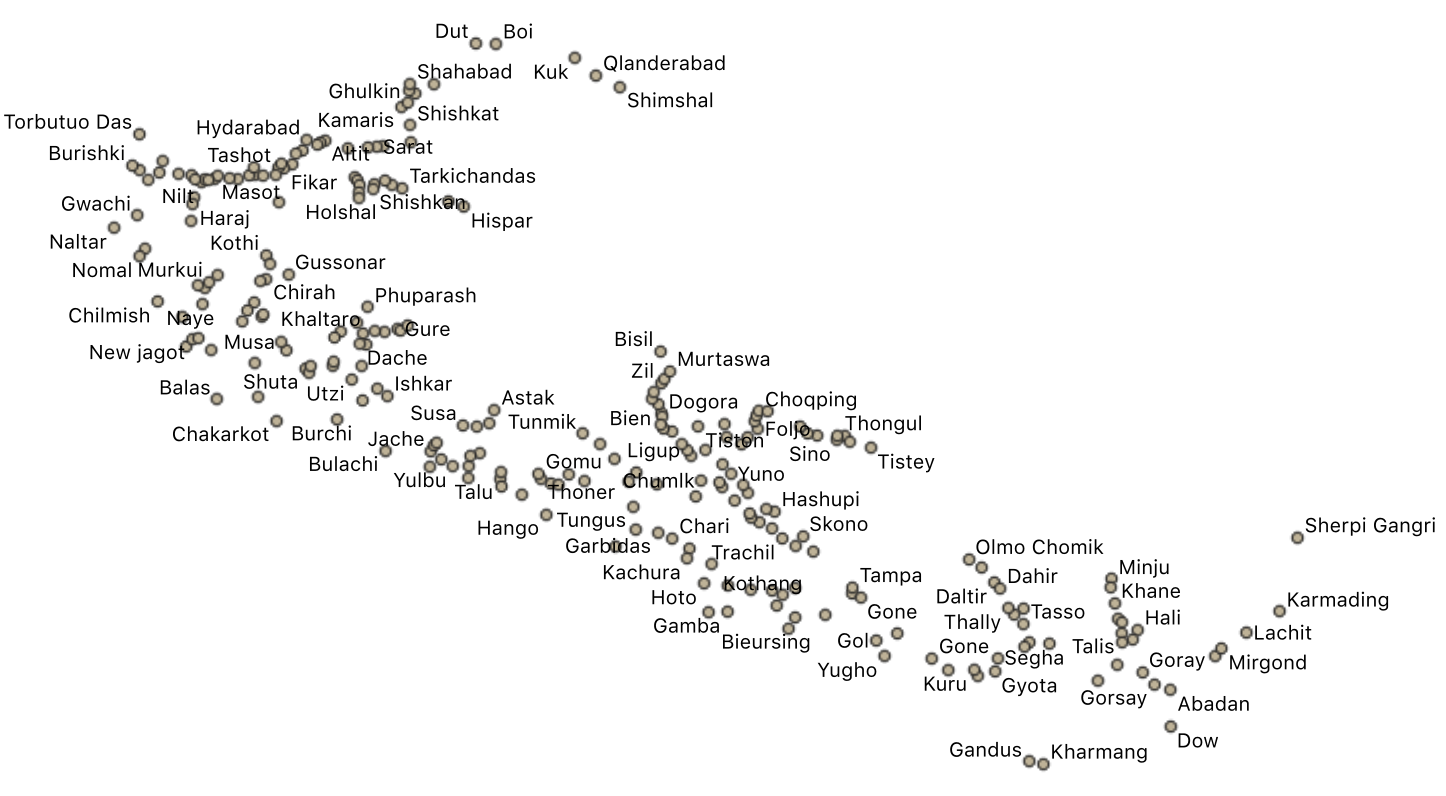
The villages small town were divided in two layers. This layers has the small settlements. Data were collected in the field and ffrom existing maps and local information.
-
The great rivers of interest in the study of the area of the Central Karakoram National Park, including the Indus river and the Gilgit river.
-
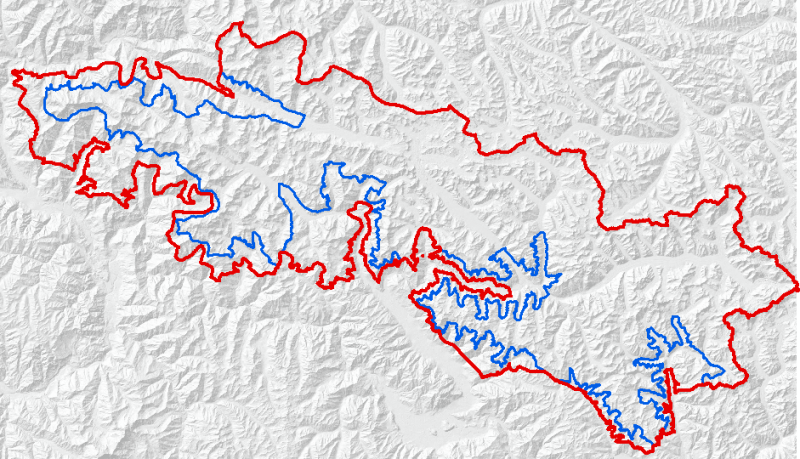
The data represents the new Central Karakoram National Park (CKNP) limit proposed in the document of the Management Plan in 2012. The data comprises the limit of the Core zone, as defined in the Management Plan
-

CKNP Core Zone has been produced in the framework of the SEED Project
-
Elevation contours (1000 meters) of the Central Karakorum National Park.
-
Persistent Organic Pollutants (POPs) and Polycyclic Aromatic Hydrocarbons (PAHs) are important classes of compounds of serious environmental concern. These compounds were measured in waters, sediments and soils from several high altitude sites in the Sagarmatha National Park (Nepal) and included in the Himalayan ridge. In water samples, low-level substituted PCBs and PBDEs, along with more volatile PAHs, were the most common contaminants. In sediment and soil samples, the PCB profile was mainly composed of medium-level chlorinated congeners and significantly correlated with altitude. The PAH profile for water and soil samples showed the main contribution of pyrogenic PAHs due to emissions of solid combustion, whereas the profile for sediments indicated the main contribution of pyrogenic PAHs from gasoline emissions. The PAH levels measured in Himalayan samples must be considered as low to medium contaminated, whereas the regarded Himalayan stations can be considered undisturbed remote areas concerning PCB, PBDE and OC compounds.
